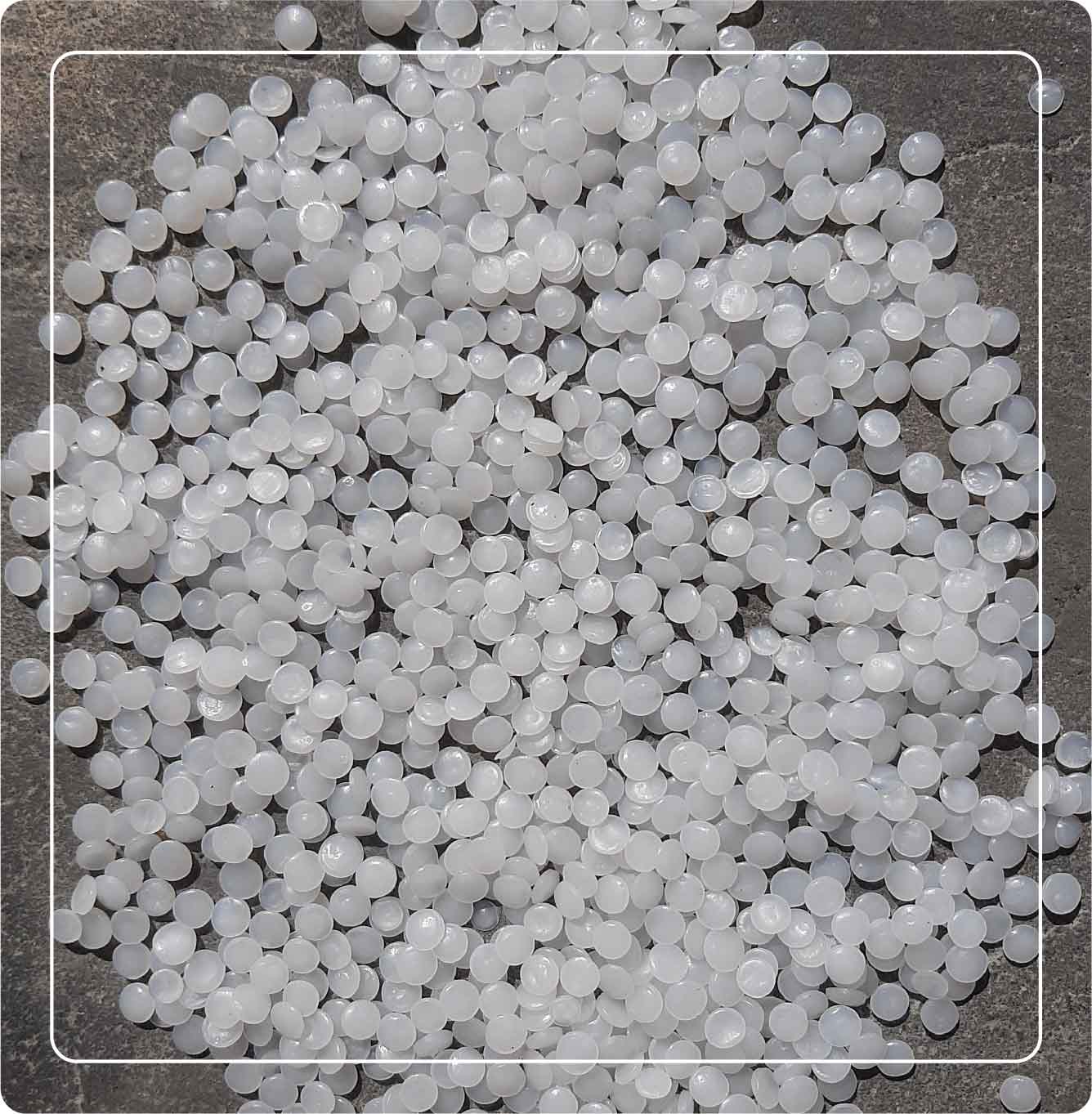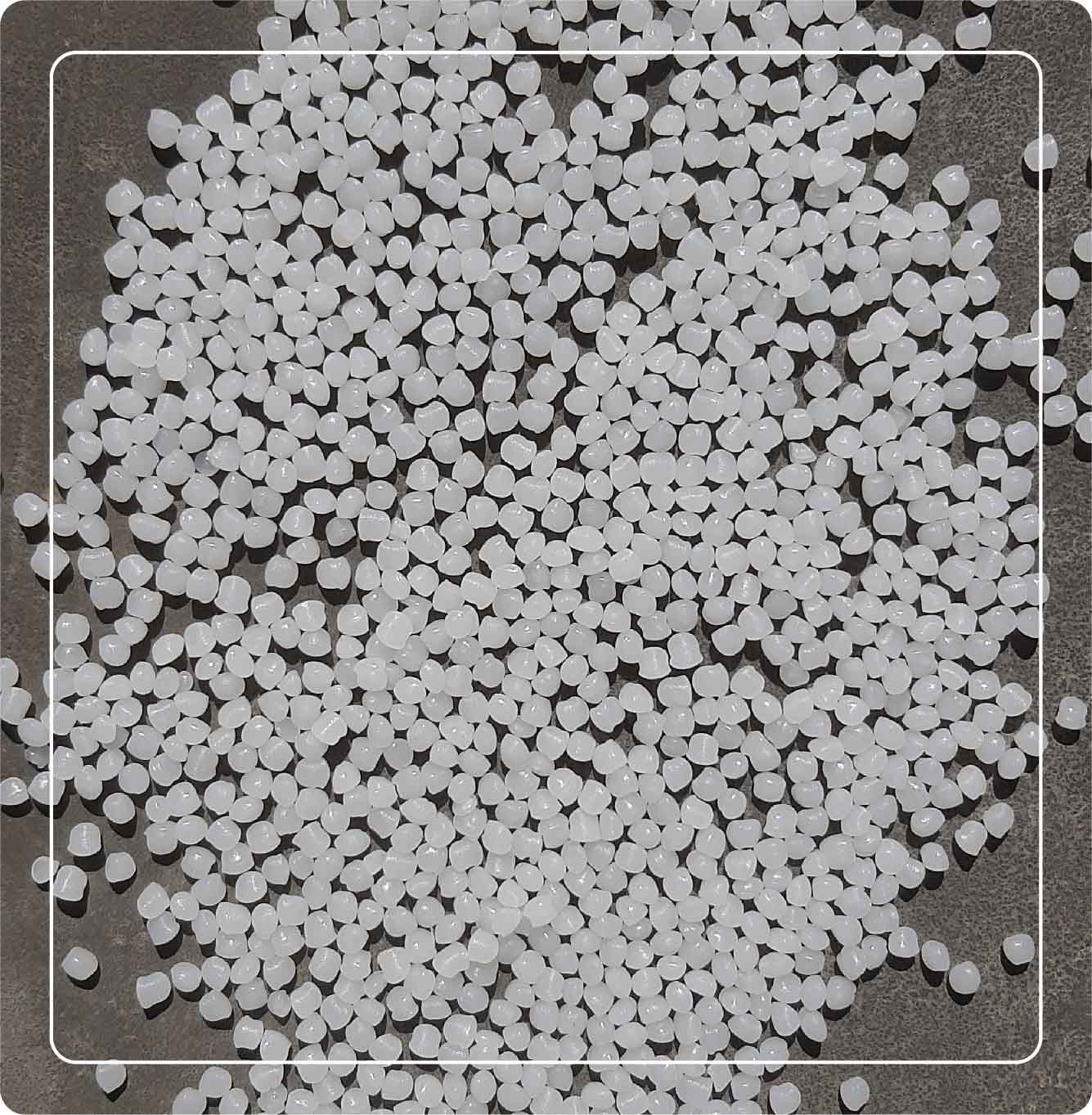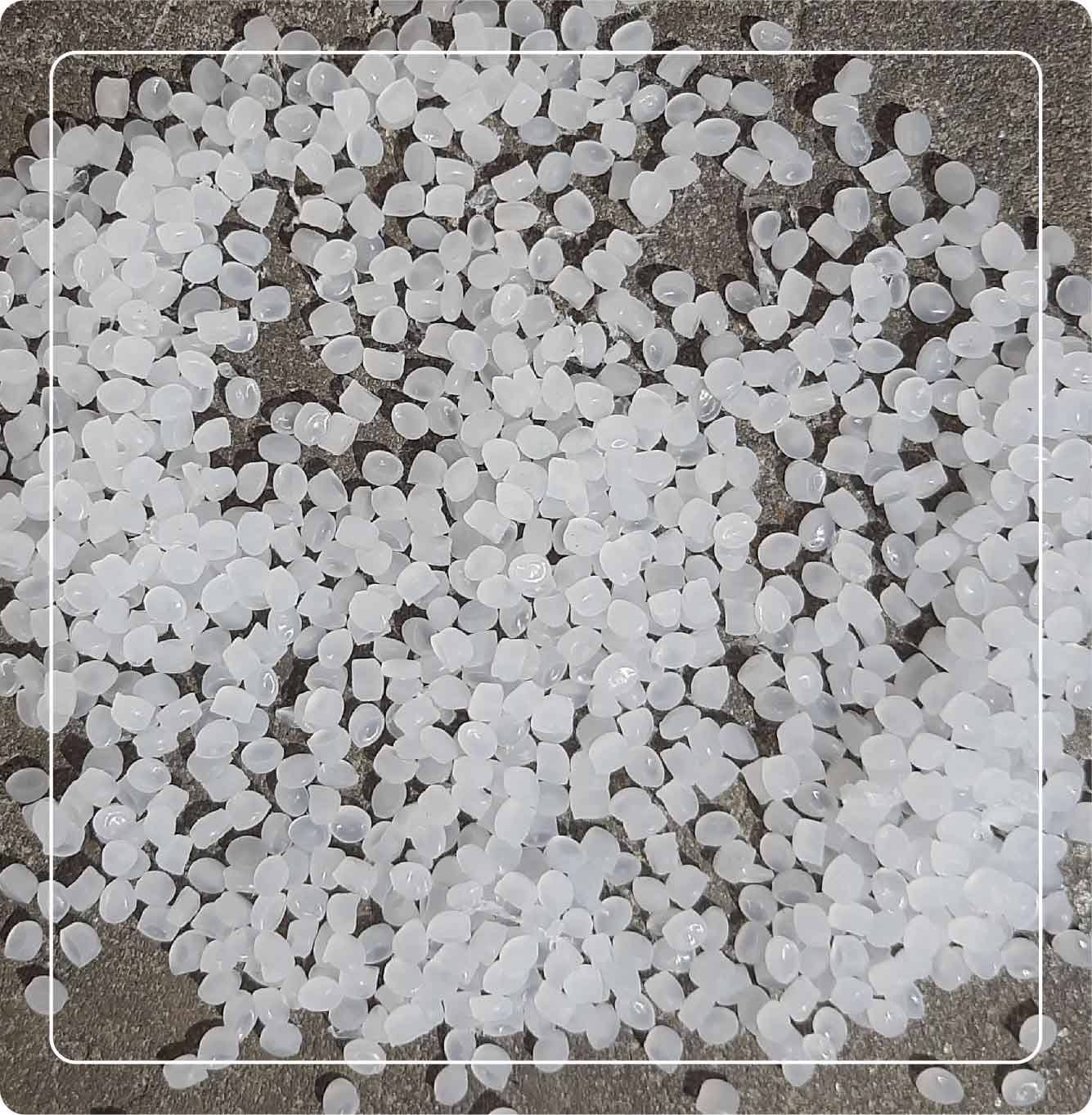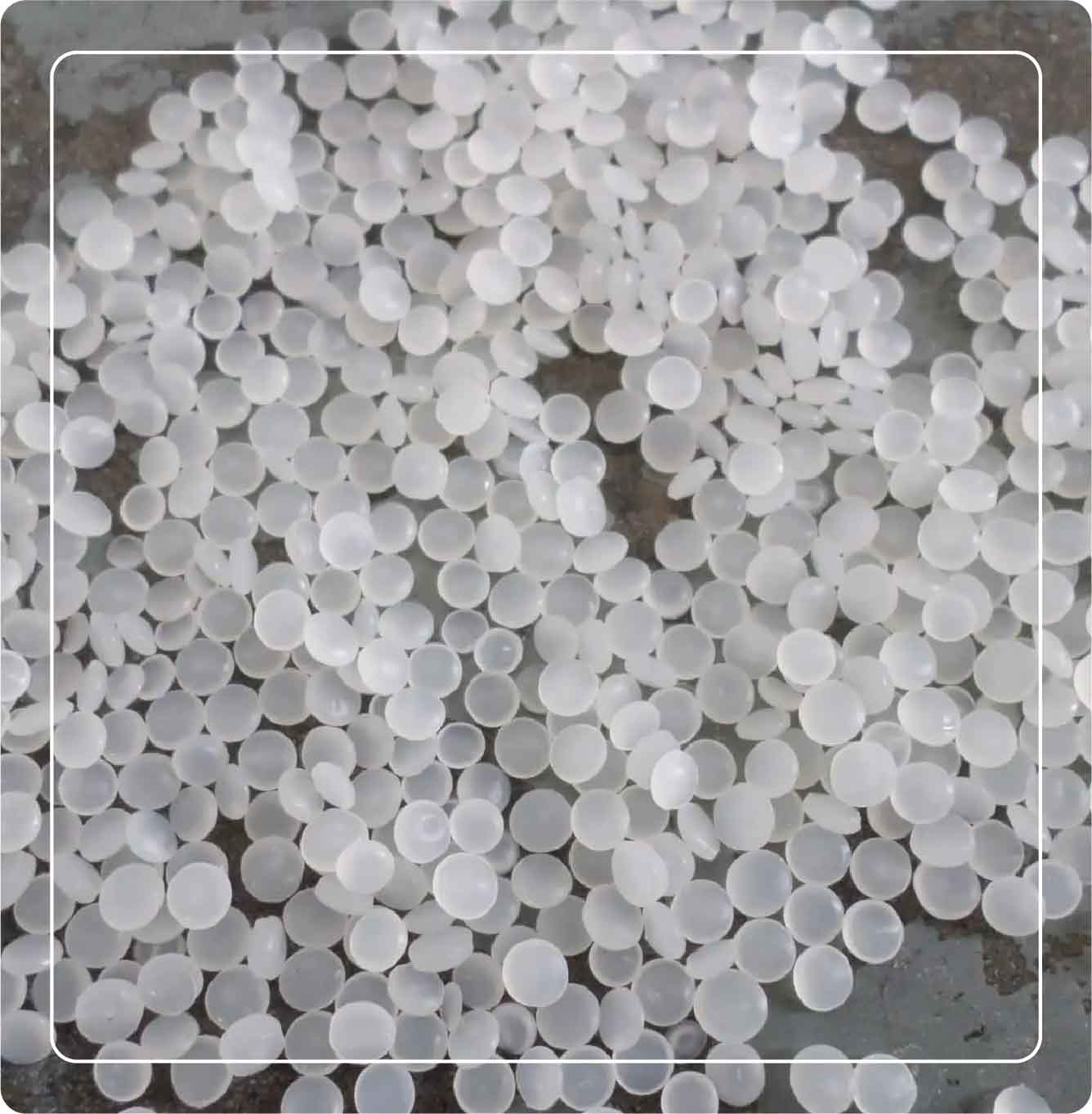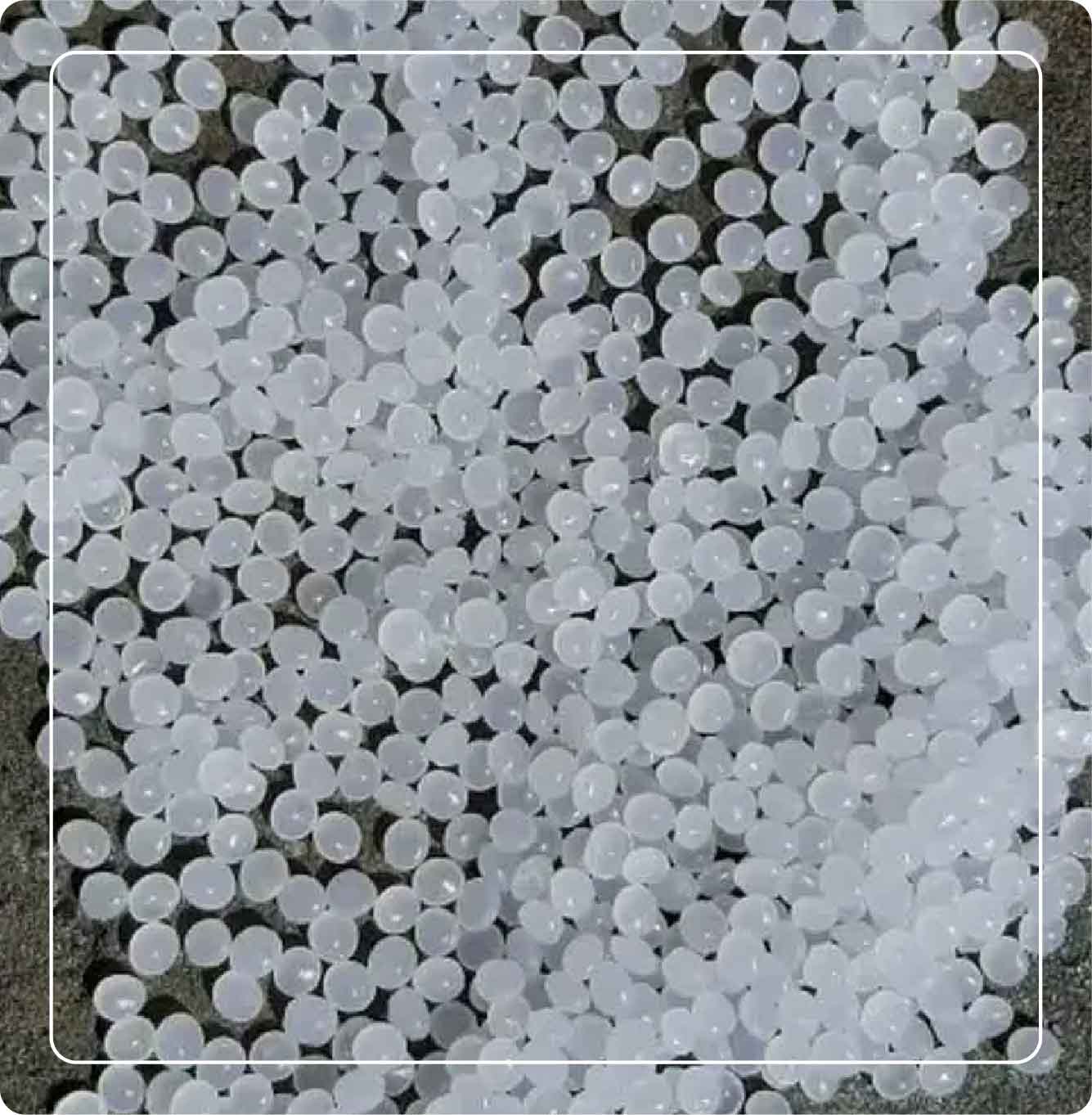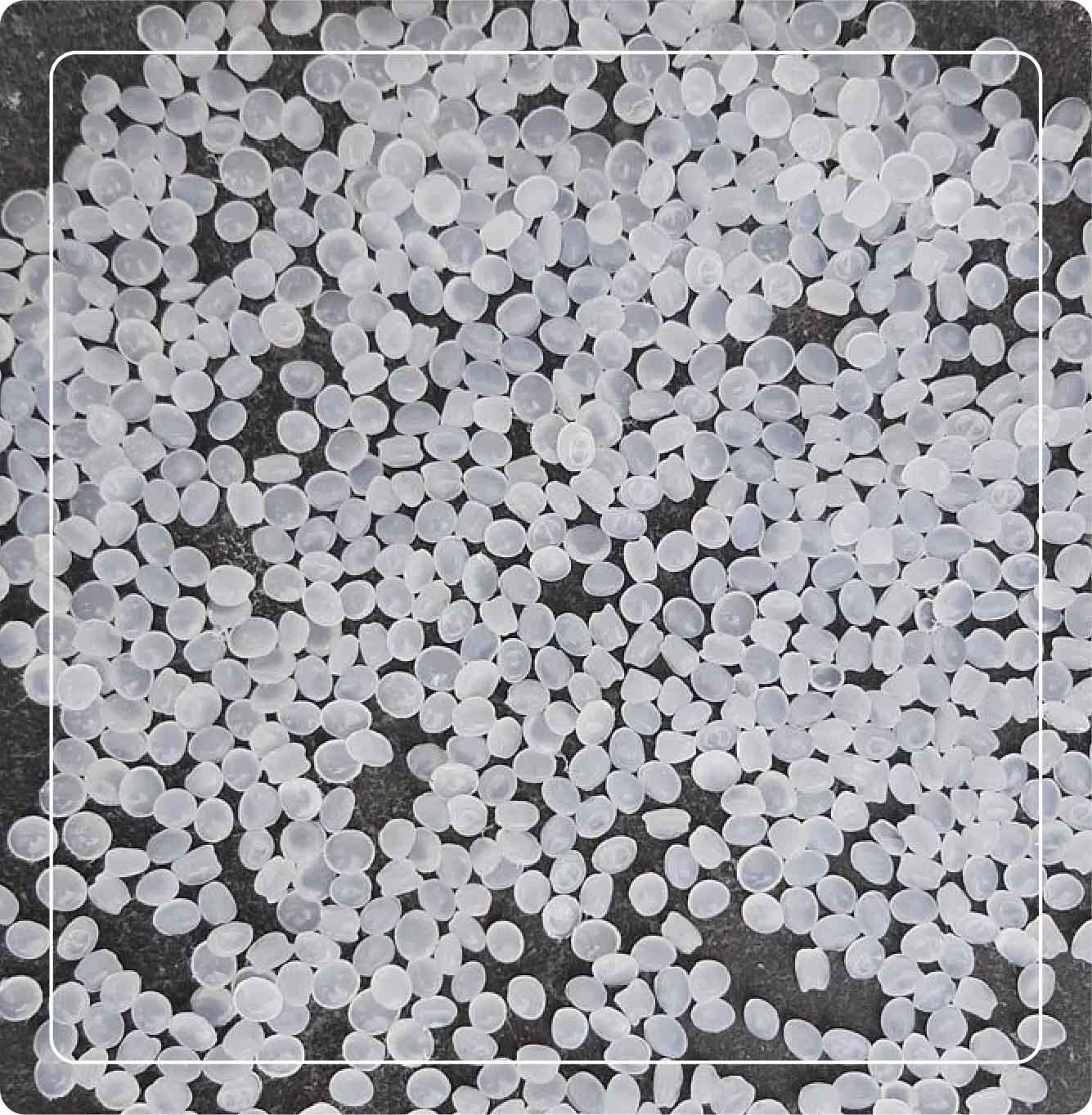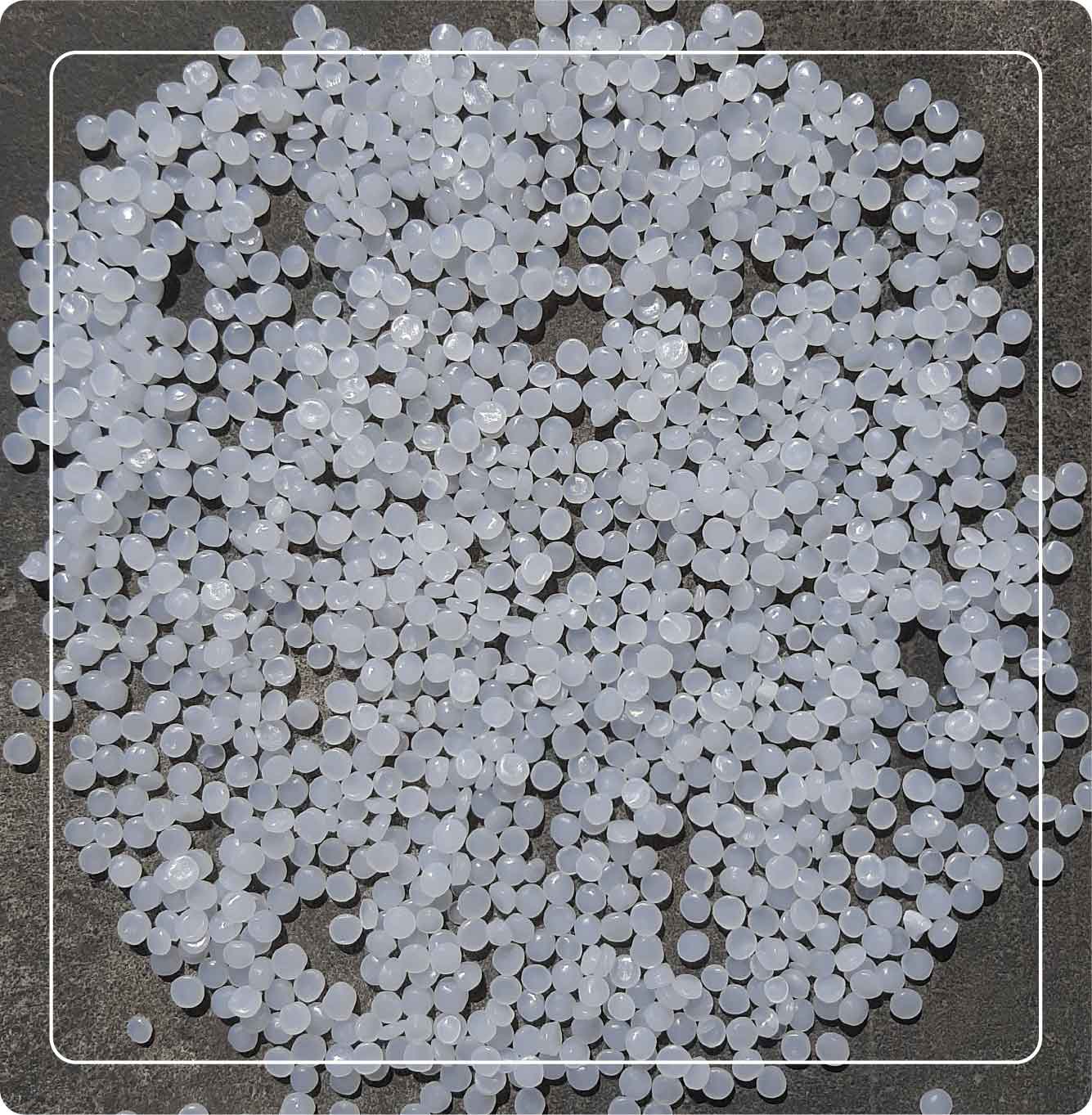No products in the cart.
HDPE Film Processed Off Grade Granules
Material Name : HDPE (High Density Polyethylene)
Material Details :
- Source : Petrochemical Industry
- Type : Processed Off-Grade (Not Recycled and Never Used Before)
- Best For : Blown Film Applications
Packing : Jumbo Bags (750-850 KGS)
Physical Unit Min - Value Max - Value Melt Index g/10min 0.20 0.50 Density g/cm3 0.95 0.955 Moisture Shape Size Color < 0.01 % Granules 3 - 5 mm Natural (98%) HDPE Injection Off Grade Granules
Material Name : HDPE (High Density Polyethylene)
Material Details :
- Source : Saudi Arabian Petrochemical Industry
- Type : Off Grade (No Additives/color Added, Not Recycled and Not Used Before)
- Best For : Injection Applications (Crates, Boxes, Industrial Parts/Containers etc.)
Packing : 650 kgs to 800 kgs Jumbo Bags
Physical Test Unit Value Melt Index (190°C/2.16kg) ASTM D1238 g/10min 8.00 - 10.00 Density (23°C) ASTM D1505 g/cm3 0.955 - 0.960 Tensile Strength at Yield ASTM D638 MPa 24 - 26 Tensile Strength at Break ASTM D638 MPa 20 - 22 IZOD Impact Strength ASTM D256 J/m 75 - 80 Flexural Modulus ASTM D790 MPa 1600 - 1650 Moisture Content Shape Size Color < 0.01% Granules 3 - 6 mm Natural LDPE Film Off Grade Granules
Material Name : LDPE (Low Density Polyethylene)
Material Details :
- Source : Petrochemical Industry
- Type : Off-Grade (Not Recycled and Never Used Before
- Best For : Film Applications (Cast Film, Lamination Film, Shrink Film etc.)
Packing : 650 kgs to 800 kgs Jumbo Bags
Physical Test Unit Value Melt Index (190°C/2.16kg) ASTM D1238 g/10min 1.80 - 2.50 Density ASTM D1505 g/cm3 0.920 - 0.922 Tensile Strength at Break MD/TD ASTM D882 MPa 27/22 Tensile Strength at Break MD/TD ASTM D882 % 330/530 Tensile Strength at Yield MD/TD ASTM D882 MPa 12/11 Melting Temperature --- °C 110 - 115 Moisture Content Shape Size Color <0.01% Granules 4 - 5 mm Natural LLDPE Film Processed Off Grade Granules
Material Name : LLDPE (Linear Low Density Polyethylene).
Material Details :
- Source : Petrochemical Industry
- Type : Off-Grade (Not Recycled and Never Used Before
- Best For : Film Applications
Packing : 800 kgs to 850 kgs Jumbo Bags
Physical Unit Min - Value Max - Value Melt Index g/10min 1.80 2.50 Density g/cm3 0.918 0.920 Moisture Shape Size Color < 0.01 % Granules 4 - 5 mm Near to Natural LLDPE Film Off Grade Granules
Material Name : LLDPE (Linear Low Density Polyethylene).
Material Details :
- Source : Petrochemical Industry
- Type : Off-Grade (Not Recycled and Never Used Before
- Best For : Film Applications (Heavy duty bags, lamination film, stretch film etc.)
Packing : 650 kgs to 800 kgs Jumbo Bags
Physical Test Unit Value Melt Index (190°C/2.16kg) ASTM D1238 g/10min 1.00 - 1.10 Density ASTM D1505 g/cm3 0.918 - 0.920 Tensile Strength at Break MD/TD ASTM D882 MPa 37/30 Tensile Elongation at Break MD/TD ASTM D882 % 750/850 Melting Temperature --- °C 120 - 122 Impact Strength ASTM D4272 kJ/m 21 - 22 Moisture Content Shape Size Color <0.01% Granules 4 - 5 mm Natural PE Film Mixed Off Grade Granules
Material Name : LLDPE & HDPE Mixed
Material Details :
- Source : Petrochemical Plant
- Type : Mixed Off Grade
- Best For : Blown Film Applications
Packing : 700-850 kg Jumbo Bags
Physical Unit Min - Value Max - Value Melt Index g/10min 1.00 1.50 Density g/cm3 0.920 0.950 Moisture Shape Size Color < 0.1 % Granules 4-5 mm Natural (98%) HDPE Film Off Grade Normal Granules
Material Name : HDPE (High Density Polyethylene).
Material Details :
- Source : Petrochemical Industry
- Type : Off Grade
- HS Code: 3901.10.00
Packing : Jumbo Bags (650-800 kgs)
Physical Unit Min - Value Max - Value Melt Flow Index g/10min 0.35 0.50 Density @ 23 C g/cm3 0.952 0.956 Moisture Shape Size Color < 0.01 % Granules 3 -5 mm Natural
What is PE?
Polyethylene is a thermoplastic polymer with variable crystalline structure and an extremely large range of applications depending on the particular type. It is one of the most widely produced plastics in the world (tens of millions of tons are produced worldwide each year). The commercial process (the Ziegler-Natta catalysts) that made PE such a success was developed in the 1950s by German and Italian scientists Karl Ziegler and Giulio Natta.
There are a vast array of applications for polyethylene in which certain types are more or less well suited. Generally speaking, High Density Polyethylene (HDPE) is much more crystalline, has a much higher density, and is often used in completely different circumstances than Low Density Polyethylene (LDPE). For example, LDPE is widely used in plastic packaging such as for grocery bags or plastic wrap. HDPE by contrast has common applications in construction (for example in its use as a drain pipe). Ultrahigh Molecular Weight Polyethylene (UHMW) has high performance applications in things such as medical devices and bulletproof vests.
What are the Characteristics of PE?
Polyethylene (PE) is classified as a “thermoplastic”, the name has to do with the way the plastic responds to heat. Thermoplastic materials become liquid at their melting point (110-130 degrees Celsius in the case of LDPE and HDPE respectively). A major useful attribute about thermoplastics is that they can be heated to their melting point, cooled, and reheated again without significant degradation. Instead of burning, thermoplastics like Polyethylene liquefy, which allows them to be easily [injection molded] and then subsequently recycled.
HDPE, LDPE, LLDPE are Different Types of Polyethylene.

